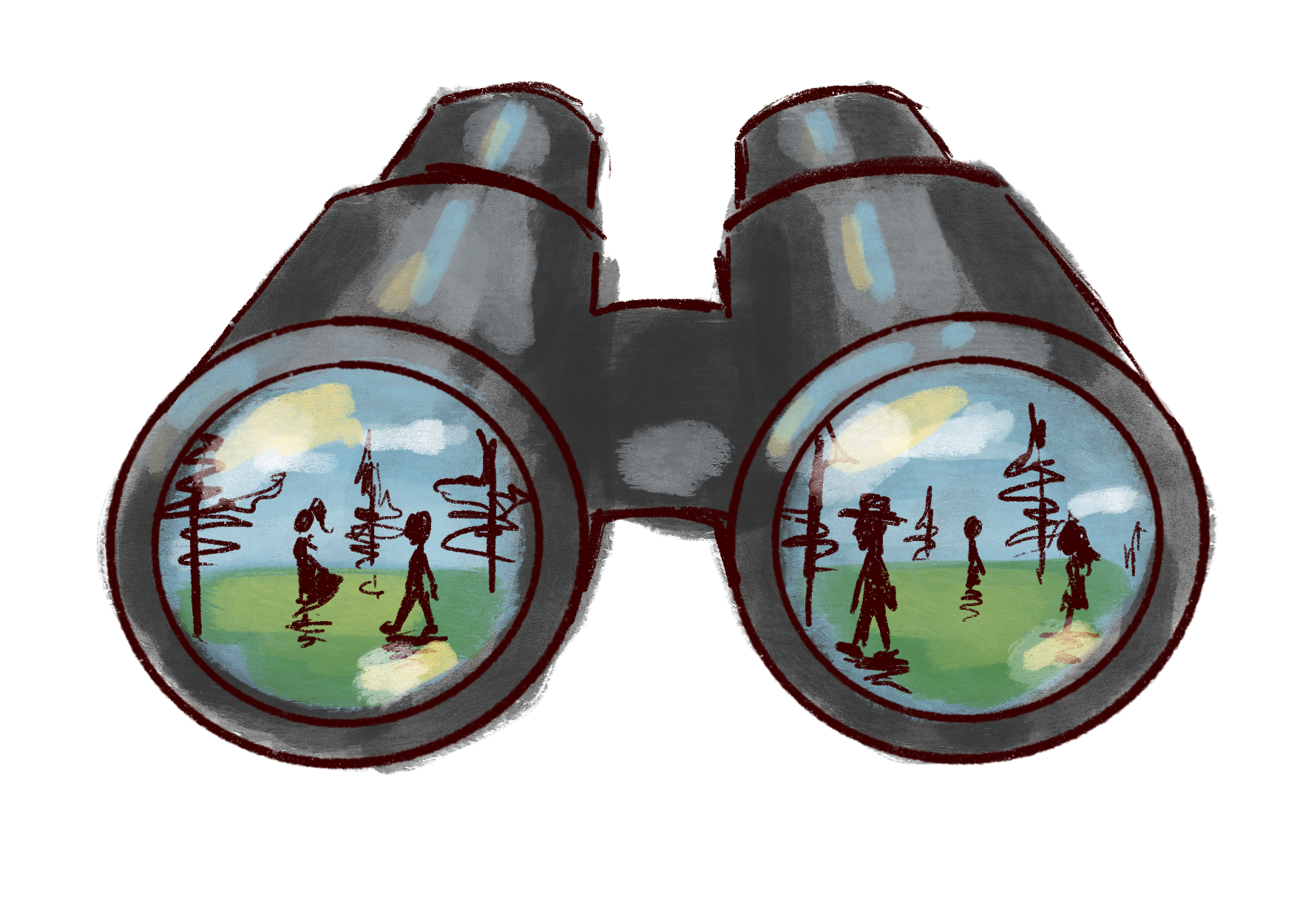
Ariane de Gennaro
I like to watch you.
Apparently, you like to watch me.
According to my psychology professor, I’m in denial about that.
People-watching is, if not one of my favorite pastimes, certainly among my most frequent — and frequently subconscious.
I can’t help it — Yale is a people-watching goldmine. With a diverse campus of power-walking students and professors, casually strolling New Haven residents, and gawking visitors, one can’t — or I can’t — help but watch the hundreds of universes contained in individual people play out before me. Maybe it’s the English major in me, ever-aspiring to understand a narrator’s perspective, whether it’s their day-to-day life or broader worldview. Maybe it’s the aspiring psychoanalyst in me that wants to understand the deep-seated, possibly existential motivations behind why people do what they do. Regardless, when people-watching, I tend to feel invisible. I disappear in the same way I do when I’m close-reading a passage or analyzing a text as a whole — I make observations, I theorize, I use context clues to try and understand a particular perspective. I’m the one doing the analysis, not the one being analyzed. In the context of people-watching at Yale, whilst enveloped by such — clearly warranted, highly useful — evaluations of students, employees and passersby, surely no one could be evaluating me, the evaluator.
It’s not that I don’t stand out. As one of Yale’s token redheads* I kind of stick out like a sore thumb.
Still, there’s this feeling that no one could possibly notice me the way I notice them.
Surely, no one is evaluating me.
Right?
I had felt this sense of invisibility in my people-watching practices prior to coming to Yale and since arriving, but I hadn’t been able to articulate it, much less make sense of it. When I arrived on campus this fall after a summer at home (I come from a rural town in Maine — think trees, cows and sparse white people) my relatively dormant people-watching senses were re-awakened. I was overstimulated in the best possible way. Yet with such caffeinated senses came the same feeling of invisibility that followed my people-watching previously.
I was just beginning to wrestle with this feeling when my “The Modern Unconscious” professor conveniently assigned one of his papers on what he deemed “The Invisibility Cloak Illusion.”
The Invisibility Cloak Illusion basically states that people — incorrectly — believe that they observe others more than others observe them.
Eureka! That’s it! My professor had articulated my exact experience, and it was a kind of relief to both be understood and feel unalone in my experience.
What was initially relief at being understood so articulately, however, quickly turned to a feeling of dread, then, finally, comfort.
It’s intimidating to be seen.
While it was comforting to know that others understood and experienced the kind of invisibility I felt when people-watching, it was unnerving to know that people actually watch me, too. And if the results of Professor Bargh’s study prove true, most of us feel that way. Yet that’s where the comfort — dare I say the beauty — of people-watching came in for me. We’re all — or so we think — lone wolves, perceiving others while only being seen, understanding others while only being heard. Little do we know that while watching one person, we are equally being seen and watched by another. You’re seen, they’re seen, we’re all seen — whether you believe it or not, whether you like it or not.
You may find yourself, like I did, initially in disbelief, then in disrepair after finding out that that invisible feeling you experience while people-watching is not only universal, but universally untrue.
It is intimidating to be seen.
But we all crave it, don’t we?
I do.
I like to be seen, and I think you do, too. It’s scary, and it’s vulnerable.
And, if we’re honest, you are going to be watched — if not by me, then by some other Yale people-watching fiend — whether you believe it or not, whether you like it or not.
You might as well embrace being seen.
*Stop telling me there are more redheads at Yale than in “the Bay Area” or your small town in Missouri. There are like seven of us.







